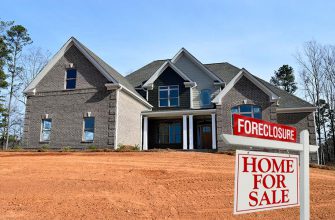Do you want to renovate your home without breaking the bank? Home improvement rebate programs are the perfect solution for homeowners who want to reduce costs while enhancing their homes. These programs offer significant savings on renovation projects, allowing you to upgrade your home without putting a strain on your finances.
In this article, we’ll introduce you to home improvement rebate programs in the US and provide an overview of how they can benefit you. From understanding eligibility to finding programs in your area, we’ll cover everything you need to know to take advantage of these money-saving opportunities. So don’t miss out on the chance to save big on your next renovation project!
- Understanding Home Improvement Rebate Programs
- Types of Home Improvement Rebate Programs
- Applying for Home Improvement Rebates
- Step 1: Research
- Step 2: Determine Eligibility
- Step 3: Gather Documentation
- Step 4: Follow the Application Process
- Step 5: Seek Guidance
- Maximizing Your Savings with Home Improvement Rebate Programs
- 1. Research Eligibility
- 2. Combine Incentives
- 3. Select Cost-Effective Upgrades
- 4. Take Advantage of Additional Opportunities
- Finding Home Improvement Rebate Programs in Your Area
- 1. ENERGY STAR Rebate Finder
- 2. Local Utility Company Websites
- 3. Database of State Incentives for Renewables and Efficiency (DSIRE)
- Case Studies: Real-Life Examples of Homeowners Saving with Rebate Programs
- Tips for a Successful Home Improvement Project
- 1. Set a Realistic Budget
- 2. Hire a Contractor
- 3. Plan your Project
- 4. Quality Over Quantity
- 5. Manage Project Costs
- Future Innovations in Home Improvement Rebate Programs
- Eligibility Criteria
- Digital Tools and Platforms
- Increased Incentives
- Collaboration and Partnerships
- Conclusion
Understanding Home Improvement Rebate Programs
Home improvement rebate programs are designed to help homeowners reduce costs on renovation projects. However, before applying for these programs, it’s important to understand the eligibility criteria and types of incentives offered.
To be eligible for home improvement rebate programs, homeowners must meet certain criteria such as income limits, property ownership, and residency requirements. Some programs require homeowners to meet specific energy efficiency standards or use specific products.
The types of incentives offered through home improvement rebate programs can vary widely. Some programs offer rebates on insulation upgrades, while others offer financial incentives for installing solar panels or energy-efficient appliances. In some cases, programs may also offer free energy audits to help homeowners identify areas where they can reduce energy consumption.
It’s important to note that applications for home improvement rebate programs typically require documentation to verify eligibility. Homeowners may need to submit proof of income, property ownership, and project cost estimates, among other things.
Before applying for a rebate program, homeowners should carefully review the program requirements and ensure that they meet all eligibility criteria. Additionally, it can be helpful to work with a contractor or other professional who is familiar with the program requirements and can provide guidance on maximizing savings opportunities.
Types of Home Improvement Rebate Programs
Home improvement rebate programs offer various incentives to help homeowners save money on their renovation projects. Below are some of the most common types of home improvement rebate programs available:
| Program Type | Focus |
|---|---|
| Solar Panel Rebates | Installing solar panels |
| Insulation Rebates | Upgrading insulation |
| Energy-Efficient Appliances Rebates | Purchasing and installing energy-efficient appliances |
| Weatherization Rebates | Sealing air leaks, improving ventilation, and installing programmable thermostats |
| HVAC Rebates | Upgrading heating, ventilation, and air conditioning systems |
By knowing the type of rebate program available, homeowners can easily find out if they are eligible and ensure they are upgrading their homes in the most cost-effective way.
Applying for Home Improvement Rebates
Now that you have a good understanding of home improvement rebate programs, it’s time to apply for the incentives. The process of applying for rebates varies depending on the type of program and the state you live in. However, some general steps you can follow are outlined below.
Step 1: Research
Begin by researching the available rebate programs in your area. Check out the websites of relevant organizations, such as your state’s energy department, to see what incentives are available.
Step 2: Determine Eligibility
Once you have identified the potential programs, carefully consider the eligibility criteria. Confirm that your renovation qualifies for the specific program and that you meet all necessary requirements to apply.
Step 3: Gather Documentation
Before applying, gather all necessary documentation to support your application. This could include receipts, invoices, permits, and other necessary documentation. Ensure all documentation is filled out accurately and completely.
Step 4: Follow the Application Process
When applying, ensure you follow the specific process outlined by the program. Some programs may require a pre-inspection, while others may require an in-person application.
Step 5: Seek Guidance
If you’re unsure about any aspect of the application process, seek guidance from the relevant organization or consult a professional.
| Documentation Checklist | Additional Notes |
|---|---|
| Invoice or Receipt for Home Improvement Work | Ensure the invoice contains a detailed description of the renovation work and the cost of labor and materials. |
| Proof of Payment | Submit copies of your payment for the home improvement work, such as a canceled check or credit card statement. |
| Proof of Ownership | Provide documentation showing that you own the property and reside at the address listed in the application. |
| Manufacturer’s Information for Energy-Efficient Products | Submit the manufacturer’s information for any energy-efficient products installed, such as insulation or appliances. |
| Permits | Provide proof of necessary permits for any home renovations. |
By following these steps and providing the necessary documentation, you will increase your chances of securing the rebate. Remember, the application process can take several weeks or longer, so be patient and follow up regularly with the organization to ensure your application is being processed efficiently and accurately.
Maximizing Your Savings with Home Improvement Rebate Programs
Home improvement rebate programs offer homeowners a significant opportunity to reduce costs and enhance their home. By combining incentives and selecting cost-effective upgrades, it is possible to maximize savings even further. Here are some strategies that can help homeowners make the most of home improvement rebate programs:
1. Research Eligibility
Before beginning any home renovation project, it is essential to research the eligibility criteria for home improvement rebate programs. This will help ensure homeowners take advantage of all available opportunities.
2. Combine Incentives
Many rebate programs provide additional incentives for combining specific upgrades. For example, installing insulation alongside energy-efficient appliances might result in a more significant rebate than installing either upgrade alone. Make sure to check for bundling options to maximize savings.
3. Select Cost-Effective Upgrades
When choosing upgrades, pick the ones that offer the most significant impact for the least amount of money. For example, switching to LED light bulbs is a simple upgrade that can result in considerable energy savings and is often eligible for rebates.
4. Take Advantage of Additional Opportunities
Some rebate programs offer additional savings opportunities, such as financing options with low-interest rates. Make sure to explore all available options to maximize savings.
By following these strategies, homeowners can truly take advantage of home improvement rebate programs and maximize their savings.
Finding Home Improvement Rebate Programs in Your Area
Looking for home improvement rebate programs in your area? You’re in luck! There are numerous resources available that can assist you in your search. Here are a few websites and databases to get you started:
1. ENERGY STAR Rebate Finder
The ENERGY STAR Rebate Finder is a helpful tool provided by the US Environmental Protection Agency (EPA). It allows you to search for rebates on energy-efficient appliances and other products by your zip code. Simply enter your zip code and the type of product you’re looking for, and the tool will provide you with a list of rebates available in your area.
2. Local Utility Company Websites
Many utility companies offer rebate programs to their customers. Check your local utility company’s website to learn more about what programs they offer and how to take advantage of them.
3. Database of State Incentives for Renewables and Efficiency (DSIRE)
DSIRE is a comprehensive database of state, local, and utility rebate programs for energy-efficient upgrades and renewable energy systems. The database is searchable by state and type of incentive, making it easy to find programs in your area.
By taking advantage of these resources, you can find the perfect rebate program for your home renovation project and reduce your costs in the process.
Case Studies: Real-Life Examples of Homeowners Saving with Rebate Programs
In this section, we will showcase real-life examples of homeowners who have taken advantage of rebate programs to save money on their home improvement projects. These success stories will illustrate the significant savings achieved and encourage readers to explore rebate programs for their own renovations.
| Homeowner | Project | Savings |
|---|---|---|
| Samantha Johnson | Insulation and energy-efficient appliances | $2,500 |
| Mark and Sarah Williams | Solar panel installation | $4,000 |
| David Martinez | Heating, ventilation, and air conditioning (HVAC) system | $3,000 |
“I was hesitant to apply for the rebate program at first, but it ended up being the best decision I made for my home renovation. The savings I received allowed me to add even more upgrades to my project, enhancing the value and comfort of my home.”
These case studies highlight the potential savings that can be achieved through rebate programs, making it possible for homeowners to complete the renovations they desire while staying within their budget. By learning from real-life examples, readers can gain insight into how to maximize their savings for their own home improvement projects.
Tips for a Successful Home Improvement Project
If you’re planning a home improvement project, it’s essential to budget and plan ahead to ensure a successful renovation. Here are some tips to help you achieve your goals:
1. Set a Realistic Budget
Before starting any home renovation, it’s necessary to determine your budget. Be realistic and factor in unexpected expenses that may arise during the project.
2. Hire a Contractor
Unless you’re experienced in home renovations, hiring a professional contractor is a wise decision. Look for licensed and insured contractors with positive reviews from previous clients.
3. Plan your Project
From design to execution, plan your renovation step-by-step, including a timeline for completion. Consider obtaining a permit if required.
4. Quality Over Quantity
Invest in high-quality materials and appliances capable of delivering long-term benefits, so you don’t have to spend additional money on replacements or repairs in the future.
5. Manage Project Costs
Keep track of expenses and look for ways to cut costs without compromising quality. Consider using efficient lighting solutions and appliances to reduce utility bills and increase energy efficiency.
By following these tips, you can achieve a successful home renovation project that enhances your home’s value and livability while staying within your budget.
Future Innovations in Home Improvement Rebate Programs
Home improvement rebate programs have been helping homeowners save money on their renovation projects for years. However, these programs are not static and continue to evolve over time. In the future, we can expect to see several exciting trends and innovations in home improvement rebate programs.
Eligibility Criteria
One potential trend is the expansion of eligibility criteria for rebate programs. As renewable energy becomes more prevalent, rebate programs may incorporate incentives for homeowners who install solar panels or other alternative energy sources. Additionally, some programs may focus on helping low-income homeowners make essential repairs and upgrades to their homes to improve energy efficiency and overall safety.
Digital Tools and Platforms
Another innovation that may develop is the growth of digital tools and platforms to streamline the rebate application process. Homeowners could access an online dashboard that provides information about rebate programs available in their area, required documentation, and step-by-step instructions. This digital approach could simplify the application process and make it more accessible to homeowners who are not familiar with the traditional methods of application.
Increased Incentives
As more homeowners choose to invest in energy-efficient upgrades, rebate programs may increase incentives to promote further adoption. Rebate programs may increase the amount of money homeowners can receive through rebates, or expand the types of upgrades that qualify for reimbursement.
Collaboration and Partnerships
Lastly, we can expect to see more partnerships and collaborations established between government entities, utilities, and private companies to expand the scale and reach of home improvement rebate programs. These collaborations may result in more comprehensive and robust programs that offer a wider variety of incentives and benefits to homeowners.
As home improvement rebate programs continue to evolve and grow, it’s essential for homeowners to stay up-to-date with the latest trends and innovations. By staying informed, homeowners can take full advantage of available programs and maximize their savings on their next renovation project.
Conclusion
Home improvement rebate programs are an excellent way to save money on renovation projects while enhancing the value and comfort of your home. By understanding the eligibility criteria and types of incentives available, homeowners can take advantage of significant cost reductions.
Maximizing savings through strategic planning and combining incentives is an effective way to save even more. Online resources and databases make it easy to find available rebate programs in your area, and real-life case studies provide inspiration and evidence of successful projects.
By following helpful tips and preparing for the project, homeowners can ensure a smooth renovation process. Looking to the future, trends and innovations in home improvement rebate programs can be expected to make these programs even more accessible and beneficial for homeowners in the years to come.
Don’t miss out on the opportunity to save big on your next renovation project. Take action today and explore the available rebate programs.









